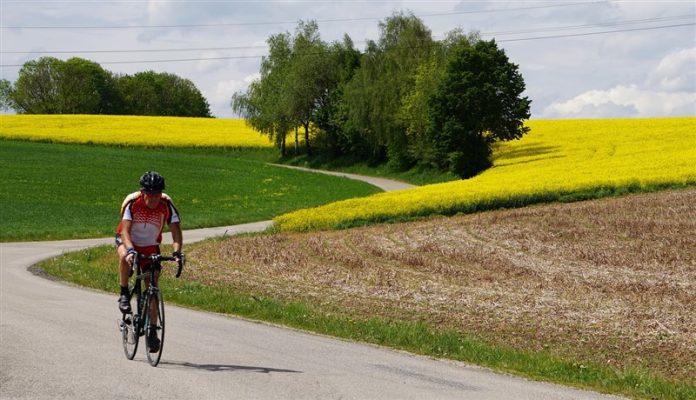Introduction to Paris-Brest-Paris
The Paris-Brest-Paris (PBP) Audax ride is more than just a long-distance cycling event—it’s a legendary rite of passage for endurance cyclists and randonneurs around the globe. Held every four years in France, this prestigious event covers 1,200 kilometers of challenging terrain and rich history, making it the most iconic fixture in the world of Audax cycling.
Whether you’re an experienced randonneur or an ambitious newcomer to ultra-distance cycling, the PBP stands out as a must-do achievement. In this post, we’ll explore everything you need to know about Paris-Brest-Paris: its history, route, format, the rider experience, and how you can prepare for it.
A Legacy on Two Wheels: The History of Paris-Brest-Paris
Founded in 1891, Paris-Brest-Paris was initially organized by journalist Pierre Giffard as a demonstration of the bicycle’s potential for long-distance travel. Covering the route between the French capital and the Atlantic port of Brest and back, the inaugural event was a grueling test of human and machine—completed by only a handful of riders.
From its origins as a race for professional cyclists, the event gradually evolved into a non-competitive Audax randonneur event, especially after the early 20th century. Since 1931, the Audax Club Parisien (ACP) has overseen the modern randonneur version of PBP, emphasizing self-sufficiency, pacing, and endurance over speed or rankings.
Today, PBP is revered not just for its history but for its spirit. Cyclists from over 60 nations travel to France every four years to be part of this epic experience. Its status as the crown jewel of Audax events has remained firmly intact for well over a century.
The Route: Paris to Brest and Back Again
The PBP route traditionally starts and finishes in Rambouillet, a scenic town just outside Paris, and stretches west to Brest on the Atlantic coast before looping back. The total distance is around 1,200 kilometers (approximately 745 miles), with around 11,000 meters of elevation gain across rolling hills and countryside.
Key Route Features
- Start/Finish: Rambouillet, Île-de-France
- Total Distance: ~1,200 km
- Highest Elevation Point: Roc’h Trévézel (~385m)
- Major Towns: Villaines-la-Juhel, Fougères, Tinténiac, Loudeac, Carhaix-Plouguer, Brest
- Scenery: Forests, farmland, medieval villages, river valleys, and the rugged landscapes of Brittany
What makes the route special is not just the physical challenge, but the immersion in French culture, the camaraderie among riders, and the support from enthusiastic locals who often come out in droves to cheer, serve food, and offer encouragement.
Format and Timing: Audax, Not a Race
Unlike races such as the Transcontinental or Race Across America, Paris-Brest-Paris is not a competition. It is a brevet or randonneur ride, meaning each participant must complete the course within a designated time limit, typically without external support.
Time Limits
Participants choose a time category when registering:
| Category | Time Limit | Description |
|---|---|---|
| Vedettes | 80 hours | Fastest riders; limited spots |
| Randonneurs | 84 hours | Most popular; good balance of pace and rest |
| Touristes | 90 hours | Allows for steady pacing with more sleep stops |
Each rider receives a brevet card and must get it stamped at control points along the route to prove passage. Controls are spaced roughly every 80–100 km and offer food, beds, and technical support.
Qualification and Entry
To enter Paris-Brest-Paris, you must first complete a Super Randonneur series in the same calendar year. This includes four separate ACP-certified brevets:
- 200 km
- 300 km
- 400 km
- 600 km
Many countries have affiliated randonneuring organizations that organize these qualifying rides. Completing these rides not only proves your ability but also determines your priority for registration, as PBP entry can be competitive and limited.
Additional qualifiers may include a 1,000 km brevet or audax permanents, depending on demand and registration phases.
The Rider Experience
The Start Line: Anticipation and Nerves
The buzz at the start line in Rambouillet is electric. Thousands of cyclists, clad in national jerseys and reflective vests, roll out in small waves—often grouped by their chosen time category. The mix of languages, bikes, and backgrounds creates an atmosphere unlike any other.
On the Road: Solitude and Solidarity
The ride itself is a study in contrasts. Riders may find themselves alone under the stars for hours, then suddenly enveloped in a friendly peloton at the next control. Locals line the roads with cheers, applause, and sometimes homemade crêpes and coffee in the middle of the night.
Weather can be a major factor. Rain, wind, and even heatwaves have played roles in previous editions. Sleep deprivation is another challenge. Some riders take power naps at roadside bus stops; others book beds in advance at designated sleep controls.
The Finish: Euphoria and Reflection
Crossing the finish line—often after 3 or 4 days of continuous effort—is emotional. The sense of achievement is immense, and many riders describe the journey as transformative. Whether you finish in 65 hours or 89 hours, completing PBP earns you a place in cycling history.
Equipment and Bike Setup
While there’s no single perfect bike for PBP, most riders prioritize comfort and reliability over speed. You’ll see everything from carbon endurance bikes to titanium and steel touring machines.
Recommended Setup
- Bike: Audax, endurance road, or light touring bike
- Gearing: Compact with wide-range cassette (e.g., 34T x 32T) for climbs
- Lighting: Dynamo hub system or long-life rechargeable lights
- Luggage: Saddlebag or frame bag (no panniers needed unless touring)
- Extras: Mudguards, bell, GPS, brevet card holder, reflective gear
A bike inspection is required before the event to ensure compliance with safety rules, including working front and rear lights and reflective clothing for night riding.
Training and Preparation
Preparing for Paris-Brest-Paris is a year-long commitment. Riders need to build both physical endurance and mental resilience.
Key Training Tips
- Complete a Brevet Series Early: Not just for qualification—these rides build the endurance base you’ll need.
- Train at Night: Get comfortable riding in the dark, managing fatigue, and navigating while sleepy.
- Simulate Sleep Deprivation: Practice back-to-back long rides on little rest to mimic event conditions.
- Test Your Setup: Use brevets to fine-tune bike fit, luggage, lighting, and nutrition.
Consistency and gradual progression are key. Many successful PBP finishers follow a mix of weekend long rides, midweek tempo sessions, and back-to-back long rides closer to the event.
Community and Culture
One of the defining features of PBP is the community spirit. From fellow riders to volunteers and local supporters, everyone plays a part in creating a unique and unforgettable atmosphere.
Participants often wear national club jerseys, and the event becomes a festival of cycling cultures. Friendships are made in control queues, on quiet country roads, and over midnight meals at village boulangeries.
Why Ride Paris-Brest-Paris?
- Challenge: The distance, elevation, and sleep management make it one of the hardest endurance events in the world.
- Prestige: Completing PBP is a badge of honor in the randonneuring world.
- Adventure: The landscapes, weather, and people combine for an epic journey.
- Legacy: You’ll be part of a tradition dating back to 1891, joining thousands who’ve tested themselves on this iconic route.
Famous Riders and Notable Completions
| Rider | Year | Country | Completion Time | Notable Achievement |
|---|---|---|---|---|
| Charles Terront | 1891 | France | 71h 22m | First-ever winner of Paris-Brest-Paris |
| Hubert Opperman | 1931 | Australia | 49h 23m | Rode solo and won during the first Audax-style PBP |
| Scott Dickson | 1999 | USA | 44h 15m | 3-time fastest American finisher |
| Seana Hogan | 2003 | USA | 66h 53m | Notable RAAM champion and top female endurance cyclist |
| Felix Pfaeffli | 2015 | Switzerland | 43h 49m | Among the fastest finishes of the 2015 edition |
| Isabelle Esclangon | 1987 | France | 62h+ | One of the first women to complete multiple PBP events |
| Alan Rompel | 2011 | USA | 88h 00m | Completed PBP on a fixed gear bicycle |
| Audrey McKenna | 2019 | UK | 85h 10m | Oldest female UK finisher at age 67 |
| Jurek Czarnota | 2019 | Poland | 43h 47m | Top Polish finisher in the 2019 edition |
| Bernard Moitessier | 1951 | France | 54h+ | Later famous for solo sailing, completed PBP as a young man |
Conclusion: A Journey Worth Every Kilometer
Paris-Brest-Paris is not just a cycling event—it’s an adventure of the soul. It challenges your body, tests your willpower, and rewards you with memories and camaraderie that last a lifetime. Whether you’re aiming to ride it in 80 hours or take your time with 90, PBP is a celebration of everything beautiful about long-distance cycling.
If you’re ready for a challenge that goes beyond the physical—into the realm of personal growth, endurance, and global fellowship—then Paris-Brest-Paris awaits.
Have you ridden Paris-Brest-Paris or are you planning to one day? Share your thoughts, stories, or questions in the comments section below or submit your ride report here.








